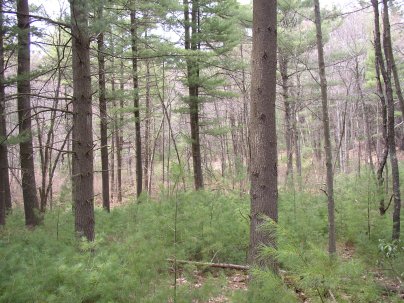Next time you’re walking through a forest, enjoying the calm, natural splendor of your surroundings, you should probably know this: The tree right next to you could explode at any moment.
Think I’m kidding? I’m not, just exaggerating. As proof: here’s a fire, burning on the methane contained in a diseased — but still living — tree.

A flame fueled by methane shoots out of an oak tree being cored at Yale Myers Forest. (Photo courtesy of Yale University.)
Researchers from Yale describe what they found:
Sixty trees sampled at Yale Myers Forest in northeastern Connecticut contained concentrations of methane that were as high as 80,000 times ambient levels. Normal air concentrations are less than 2 parts per million, but the Yale researchers found average levels of 15,000 parts per million inside trees. …
The estimated emission rate from an upland site at the Yale forest is roughly equivalent to burning 40 gallons of gasoline per hectare of forest per year. …
“If we extrapolate these findings to forests globally, the methane produced in trees represents 10 percent of global emissions,” said Xuhui Lee, a co-author of the study and the Sara Shallenberger Brown Professor of Meteorology at Yale. “We didn’t know this pathway existed.”
That decomposing vegetation emits methane has been known for a long time. What’s new is two-fold. First, these trees aren’t dead, just diseased, being hollowed out from the inside by a common fungal infection. Second, as described by Stephen Wood of Columbia University’s Department of Ecology, Evolution, and Environmental Biology:
It was previously thought that methane was only produced in forests under water-logged conditions in which there was no oxygen (thus allowing for methanogenic bacteria) and that the role of trees was to pipe this methane up from the soils and into the atmosphere through diffusion from the leaves. We now know that it’s actually the trees themselves that are producing methane and that it can happen in well-drained as well as water-logged soils.
The researchers also note that the discovery shifts the calculus used in carbon sequestration. While vegetation like trees absorb a great deal of carbon, the production of methane — a particularly potent greenhouse gas — reduces the benefit of climate forests by almost a fifth.
In the words of Smokey the Bear (who today celebrates his 68th birthday): Only you can prevent forest fires. And unfortunately, the trees aren’t helping you.




